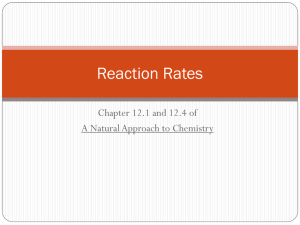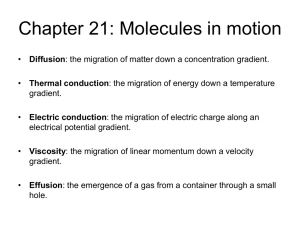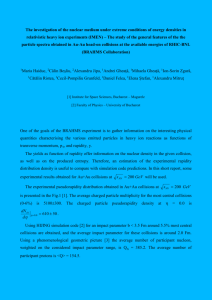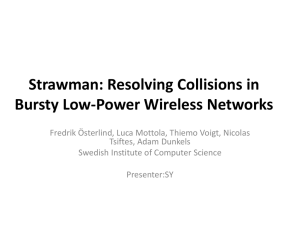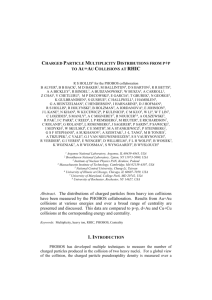Differential Cache-Collision Timing Attacks on AES with Applications
advertisement
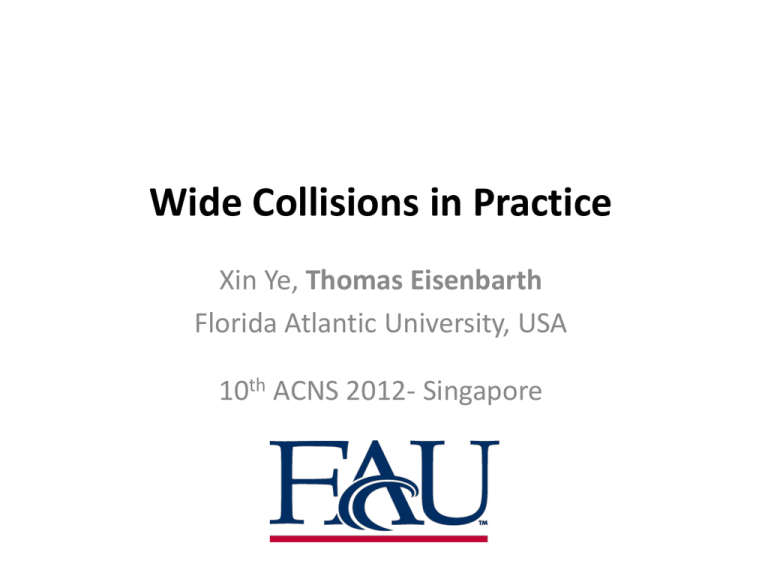
Wide Collisions in Practice Xin Ye, Thomas Eisenbarth Florida Atlantic University, USA 10th ACNS 2012- Singapore Overview • Side Channel Collision Attacks • Wide Collisions for AES • Improving Recognition Rates • Attack Results Embedded Systems • Specific purpose device with computing capabilities • Constrained resources • Many require security Side Channel Attacks plaintext Leakage ciphertext 0.8 right key wrong keys 0.7 0.6 0.5 Correlation 0.4 0.3 0.2 0.1 0 -0.1 -0.2 0 20 40 60 80 100 Time 120 140 … leaks additional information via side channel! e.g. power consumption / EM emanation 160 180 200 Collisions in AES plaintext Add_Key Sub_Bytes S S S y1 S S S S y4 = y 1 Collision: Querying same S-box value twice Collision Attack: Exploiting collision detections to recover secret key S-box 1 S-box 4 Collision Detection Collisions are highly frequent: – First round: – One encryption: .41 collisions >40 collisions Detecting collisions is hard: – One encryption: 12 720 comparisons – Probability of a collision: <0.4% – False positive rate of 1%: >120 faulty detections Should minimize false positives Wide Collisions (I) Two AES encryptions with chosen inputs Same plaintexts except for diagonals! AddRoundKey, SubBytes -> same difference Wide Collisions (II) • ShiftRows aligns differences • MixColumns can result in equal bytes Collision Wide Collisions (III) 2nd ShiftRows results in equal columns Full column collides until next ShiftRows! 5 predictable S-Box collisions between 2 encryptions! Full Column Collision Collision Detection • Direct Comparison of two power traces • Ideally only compared in leaking regions (5 s-Boxes and full MixColumns colliding) Point selection necessary: – Knowledge of implementation or profiling needed + S-box in round 2 + Mix Columns S-box 4 S-boxes (in round 3) Key Recovery Phase • 1st byte after 1st MixColumns: • 4 collisions reduce key candidates from 232 to 1 candidate per diagonal. • Full key recovery: 16 distinct collisions. Avoid false positives Outlier Method Procedure: Find overall Mean Trace Locate Outlier Region Locate Neighboring Pairs Mean Trace Individual Trace Outlier Region Outlier Method: Details Two parameters: • Size of outlier region • Admitted distance between neighboring points Both influence • Number of detected collisions • Rate of false positives Tradeoff depends on implementation Results • Unprotected SW implementation, 8-bit Smart Card • Results on 3000 power traces: Leaking Points Detected Collisions Correct Detections 1 (R = 0.9, dmax = 0.3) 127 23.0% 4 (R = 0.9, dmax = 0.3) 46 71.1% 8 (R = 0.9, dmax = 0.3) 88 93.7% Wide Collisions stronger, but knowledge of implementation or profiling needed Blind Templates (+ PCA) are great for device profiling Optimized Collision Detection • Targeting Wide Collisions – Strong leakage, easier to detect – Requires chosen inputs • Using Outlier Detection method: – Reduces overall detection of collisions – Minimizes false positives Conclusion • Wide collisions yield feasible power based collision attack • Outlier Method is a helpful tool for decreasing false positive detections Thank you very much for your attention! teisenba@fau.edu
